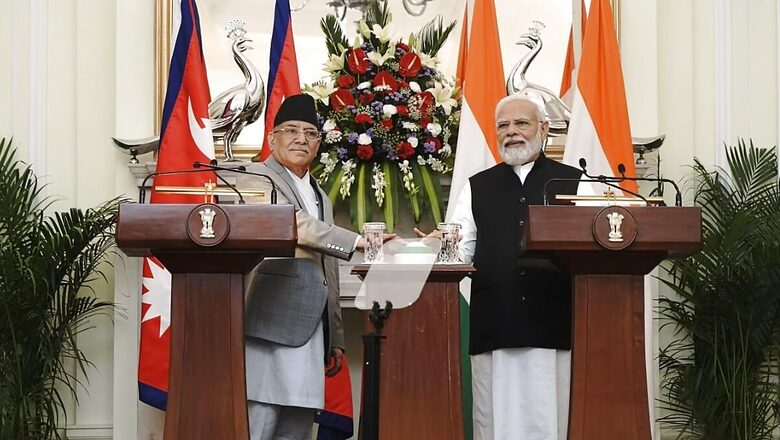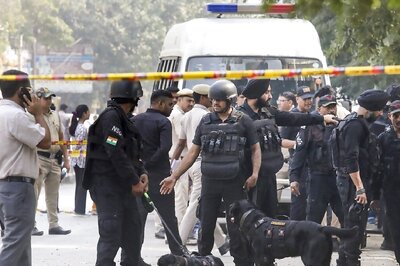
views
Nepal remains headed for a surplus power of around 5000 MW by 2025. This meets only a small requirement of either India or Bangladesh and it can get easily absorbed in India. Furthermore, policies, pricing, administration, and other arrangements for cross-border power flow with India have remained established and functional for decades now. In this context, a natural question that runs across is what is the real market of Nepali power?
Nepal does not share any border with Bangladesh. It relies on India not only for its territory but also for its transmission infrastructures for the flow of its power. And this remains severely constrained for India’s own usage too. Of late, there is new momentum now, as during the recent visit of Nepal’s Prime Minister Pushpa Kamal Dahal ‘Prachanda’, India came forward in ushering a new dimension of cooperation in the power sector by giving the transmission passage (trilateral power transaction) from Nepal to Bangladesh through India. This is path-breaking if Nepal ensures scale, efficiency and speed in generating and exporting power to both the Indian and Bangladesh markets. A long-drawn plan, this will add up significantly to the prosperity of Nepal. Both sides made their commitment clear towards greater sub-regional cooperation, including in the energy sector, which would lead to increased inter-linkages between the economies for the mutual benefit of all stakeholders.
In continuation of the Joint Vision Statement on Power Sector Cooperation of April 2022, the power sector cooperation was discussed at length for good, covering the development of generation projects, power transmission, infrastructure and power trade. Both prime ministers appreciated the growth in export of up to 452 MW of power from Nepal to India and the progress made in the construction of the 900 MW Arun-3 hydroelectric project in Nepal. A notable development made through the visit is the finalisation of an agreement for Long-Term Power Trade wherein it was agreed to strive to increase the quantum of export of power from Nepal to India to 10,000 MW within a timeframe of ten years and towards this end, take all necessary measures to encourage mutually-beneficial investments in Nepal’s hydropower generation sector and transmission infrastructure.
The groundbreaking of the 400 KV Gorakhpur-Butwal transmission line, signing of the MoU for the development of 480 MW Phukot-Karnali project by National Hydroelectric Power Corporation (NHPC) and Vidhyut Utpadan Company Ltd (VUCL) Ltd, Nepal and the Project Development Agreement for the development of 669 MW Lower Arun between Satluj Jal Vidyut Nigam (SJVN), the Investment Board of Nepal (IBN) and to fund Bheri Corridor, Nijgadh-Inaruwa and Gandak Nepalgunj Transmission lines and associated substations under Indian Line of Credit at an estimated cost of $679.8 million are other key highlights of Nepal PM Prachanda’s recent India visit.
Both India and Bangladesh continue to witness rapid economic growth, with India emerging as the jewel in the crown of the global economy. Its economic growth is not only noticeable but driving global growth. A strong domestic demand, services export, and policy emphasis on “Made in India” remain key drivers. Morgan Stanley believes India is expected to contribute 16 percent of the global Gross Domestic Product (GDP) growth over 2023-24. Likewise, Bangladesh also remains in a high growth trajectory. It is expected to grow at 8 percent annually till 2041. The growth is good for the region. It is helping millions to come out of poverty and improving the quality of life of many more. It is therefore important to sustain the growth. With a strong integration on the people, social and economic front, a strong and rising India benefits Nepal the most.
Energy remains the most important element for both India and Bangladesh to sustain their growth. And there is a huge requirement for energy moving forward. As per the World Economic Forum (WEF), India’s overall energy requirements double every 20 years. The last time it doubled was in 2020. Though India remains the third-largest producer and consumer of electricity, and the fourth-largest in renewable energy in the world, this is not sufficient to drive its economic growth. Likewise, Bangladesh requires scaling up to 60 GW by 2041 from its present 25 GW capacity to sustain its growth.
What is there for India in Nepal-Bangladesh Power Trade?
In a time that is ever requiring lowering the dependence on fossil fuels, and with war and changing geopolitics wreaking havoc in the global supply chain and price stability, how can the two countries meet their ever-growing energy needs? Fortunately, the region is also home to abundant sources of renewable energy. Besides, their own rich capabilities in renewable energy, Nepal and Bhutan augment the clean energy generation strength from their abundant hydropower, solar and wind potential. Furthermore, given their respective commitments to the clean energy transition to achieve Net Zero by 2050, the countries remain in a pivotal position to make good decisions to promote clean energy.
From a market perspective, what better definition of a perfect market can exist?
Both India and Bangladesh remain in an energy deficit and are looking for a reliable source of supply and Nepal remains in an energy surplus willing to supply thousands of megawatts of clean renewable energy. It is the energy that the region and the world needs. Furthermore, there already exists enabling transmission infrastructures between Nepal and India and India and Bangladesh through which Nepali power can flow in the two countries. One can easily conclude there cannot be a better example of a natural energy market.
Yet, the region has not seen cross-border power trade that is truly reflective of the potential, desires, and talks. Why have things not happened the way they should have happened then? What are the stumbling blocks? What is to be read between the lines? In a nutshell, it has been a distorted notion of the market that has hampered the prospects thus far. An increased thrust on clean energy in India is a big opportunity for Nepal. Importing 10000 MW in the next few years is going to give an impetus for growth in Nepal’s economy. Moreover, a framework of cross-border energy export from Nepal to Bangladesh and through the Indian power grid will have a transformational impact on Nepal’s economy. As far as Nepal’s permanent interest in the energy sector is concerned, this was the most wishful reform that is now a reality.
Building trust and credibility
Should Bangladesh be a market for Nepal’s power? And should India be forthcoming for that power flow? What benefit-sharing arrangement can suitably compensate and in what currency, how the security concerns and risks to its power system are addressed, remain important questions. Finding a common understanding and ground between the three parties on these issues can lay fertile ground for the Nepal-Bangladesh power trade. Dealing with the new arrangement has made possible a deeper sub-regional integration in the energy sector, bringing India and Nepal closer and making Bangladesh an important party of trilateral energy cooperation.
Two parties (Nepal and Bangladesh) were desperate for trade. However, there was also a third party (India) whose land was involved, and the matter remained grounded for long as it took time to making a conducive environment for making such a trilateral energy transaction happen. It has been in the theory of experts that such a logjam compromised the growth of Nepal’s energy sector. This is a narrative that prevails at large. Backdoor shifting of blames has not helped in the past and it will not in the future. The need of the hour is to better recognise and accommodate each other’s views, needs, and concerns and undertake steps to promote mutual trust and confidence in each other.
New efforts made in this direction are refreshing and should help in realising the true potential of energy cooperation among India, Nepal and Bangladesh.
Atul K Thakur is policy professional, columnist and writer with a special focus on South Asia; Deepak Rauniar is an energy expert from Nepal. The views expressed are personal.




















Comments
0 comment